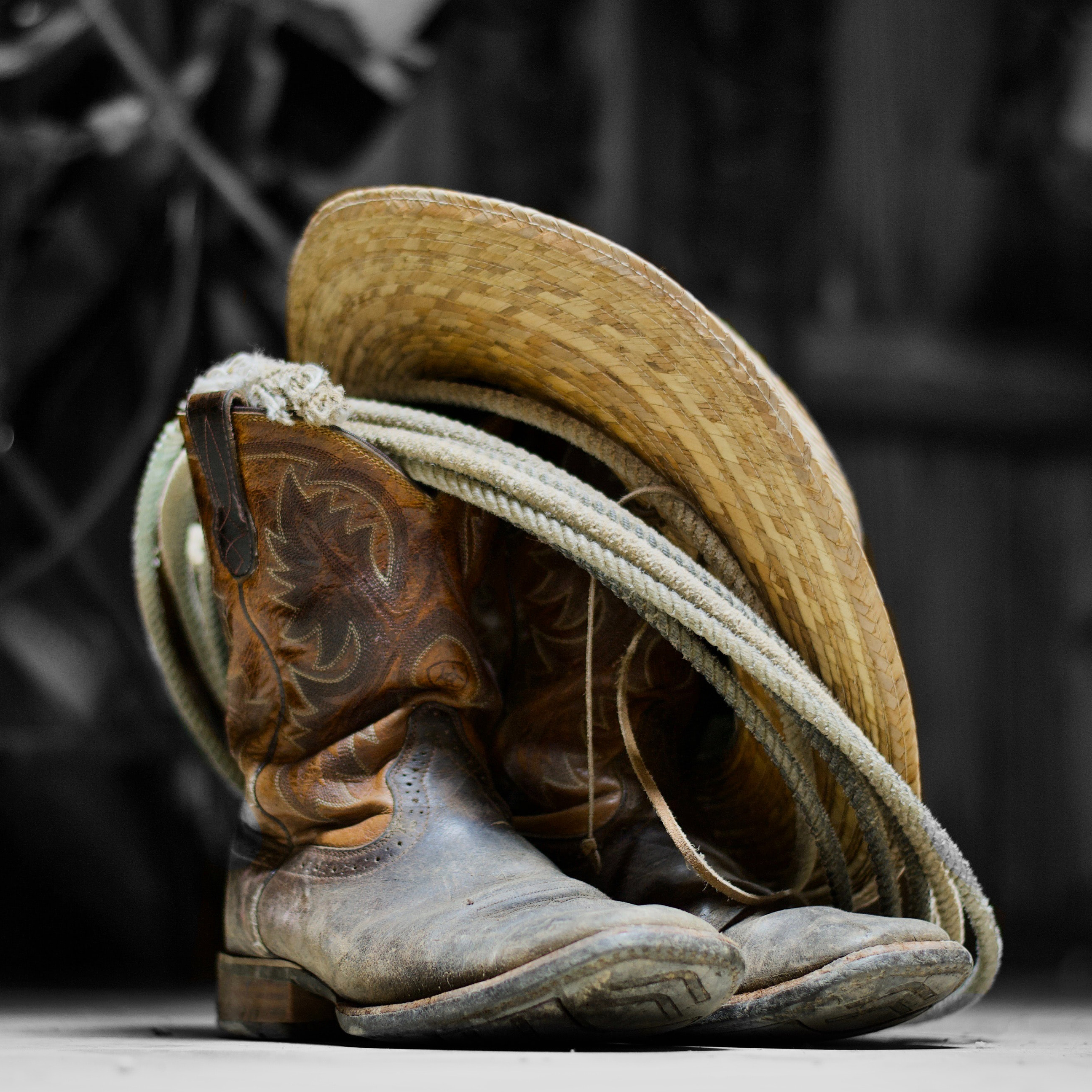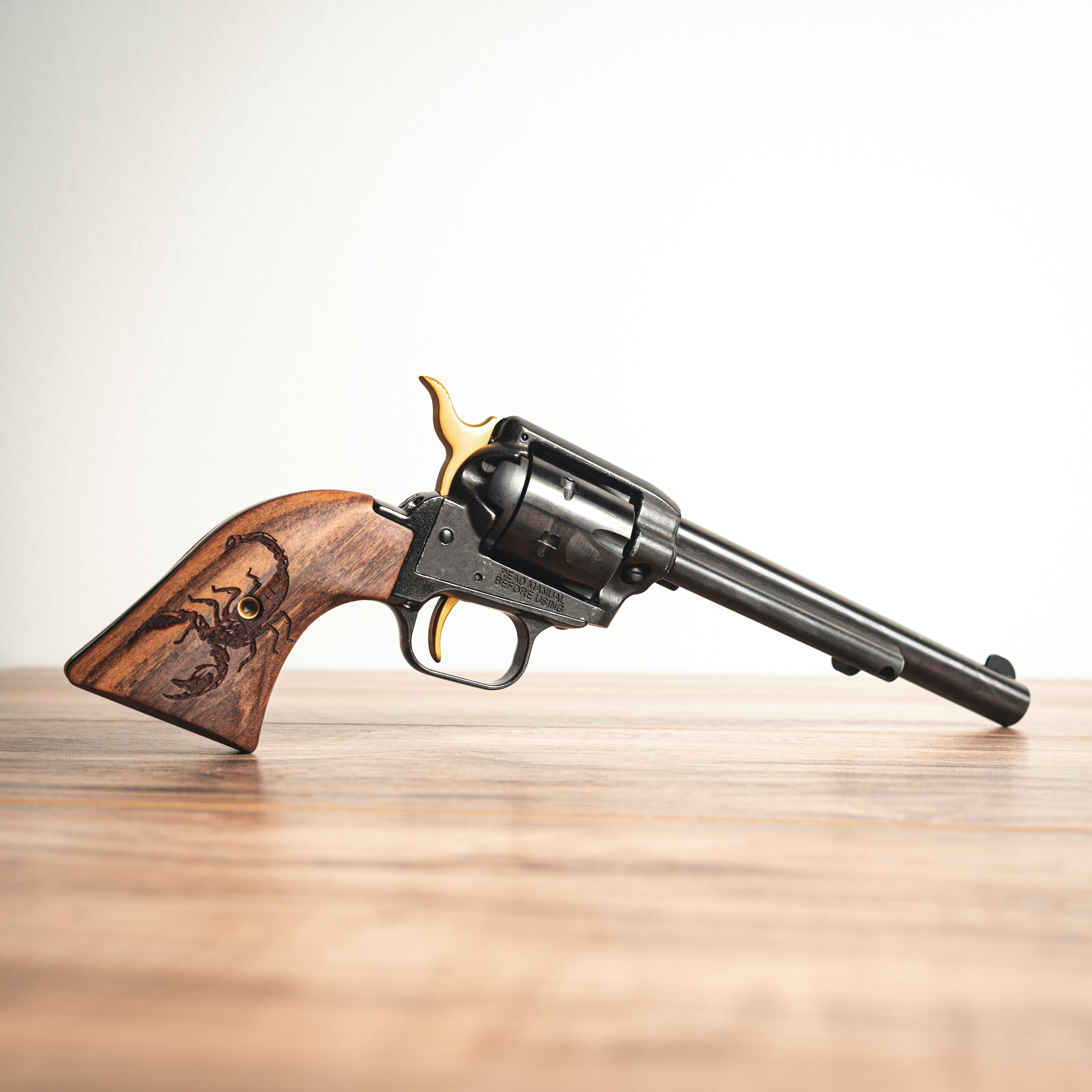
Riding boots had been a part of equestrian life for centuries. Until the industrial age, boots were individually handmade in many different styles, depending on culture. Early cowboy boot designs, along with other cowboy accoutrements, were
also heavily influenced by the vaquero tradition that developed from a tradition that originated in Spain to the Americas, dating back to the early 16th century.The boots worn by mexican vaqueros influenced cowboy boots, although the exact
origin of the modern cowboy boot as we know it today isn't very clear. Cowboy boots from Northern Mexico were most likely adopted by Americans and later came the cowboy boots we know today Military boots designed for cavalry riders also had
an
influence. Mexican vaqueros probably developed a cowboy boot from the Spanish riding boots. The Mexican cowboy boots only came in three styles, rounded toe, pointed toe and tribal toes, while the Americans offer many more styles. Also the
idea of using skins on the boots came from Northern Mexico, as well as the colors, the colors imitate the color of Mexican ranches.
Later, the Industrial Revolution allowed some styles of boots to be mass-produced. One mass-produced boot style, the Wellington boot, (a shorter but cavalry-oriented boot) was popular with cowboys in the US until the 1860s.
During the cattle drive era of 1866–1884, the cowboy was apt to ruin a good pair of dress boots while working, so some owned more decorative dress boots to wear in town. The basic style elements permeated even working boots, and made the
Wellington obsolete. Fashion magazines from 1850 and 1860 show the cowboy boot with top stitching, cutouts of geometric or other natural elements and underslung heel.
The American-style boot was taken up by bootmakers in the cattle ranching areas of Texas, Oklahoma, and Kansas. Two of the best known early bootmakers of the era were Charles Hyer of Hyer Brothers Boots in Olathe, Kansas, and H. J. "Daddy
Joe" Justin of Justin Boots in Fort Worth, Texas and later Nocona, Texas. After Justin moved to Fort Worth where shipping was easier, the Nocona brand of cowboy boots was made by Enid Justin Stelzer, eldest daughter of H. J. Justin, who
stayed in Nocona with her husband, and the couple continued the family business. After the couple divorced, the Olsen-Stelzer brand was started by Stelzer. The Texas Legislature designated the cowboy boot as the official "State Footwear of
Texas" in 2007. T.C. McInerney of Abilene, Kansas, also made the American-style cowboy boot. A picture of this boot is listed in an ad in the Abilene Weekly Chronicle on December 7, 1871.
On 20 February 1856, Lieutenant Frederick E. B. Beaumont of the Royal Engineers was granted a British patent for improvements to the Adams revolver which allowed them to be cocked and fired either by manually cocking the hammer as in
single-action revolvers or by just pulling the trigger. Beaumont was granted a US Patent (no. 15,032) on 3 June of the same year.
At that time there was intense competition between Adams and Colt, which was rapidly expanding its sales and had opened a London factory competing with the British firearms trade, manufacturing firearms with interchangeable parts. The older
1851 and 1854 Adams revolvers were self-cocking, also known as double-action. The Adams revolver was favoured by British officers in the Crimean War and colonial conflicts due to the stopping power of its larger 54 bore (.442 cal) bullet
(compared with their main competitor, the smaller .36 cal Colt Navy revolvers), and the speed of the Adams trigger-cocking action for close-quarters fighting (over the more cumbersome Colt action).
In partnership with George and John Deane, the company of Deane, Adams & Deane produced the new revolver in a variety of calibres and sizes, from pocket pistols to large military versions. The United Kingdom officially adopted the 54-bore
(.442 calibre) Beaumont–Adams in 1856, Holland and Russia following soon after. To meet the growing demand for its weapons, Deane, Adams & Deane contracted companies in Birmingham and Liége to manufacture their weapons under licence. The new
revolver gave Robert Adams a strong competitive advantage and Samuel Colt shut his London factory due to a drop in sales.
In the US, the Massachusetts Arms Company was licensed to manufacture about 19,000 specimens of the revolver in .36 calibre, of which about 1,750 were purchased by the Union Army at the beginning of the American Civil War. They also made a
pocket version in .32 calibre.
In 1867, Robert Adams' brother John Adams patented a breech-loading revolver which was adopted by the British government in place of the Beaumont–Adams. It was a solid frame pistol with six chambers, in .450 caliber. After official acceptance
of his pistol, Adams left the London Armoury Company and established his own factory, the Adams Patent Small Arms Company. His pistol was manufactured in three distinct variations (differences related mainly to methods of spent cartridge
ejection) between 1867 and about 1880. The models were tested and adopted by the British Army and Navy, with the last, the M1872 Mark III, seeing the widest use.
The John Adams revolver remained the official sidearm of the British Army until replaced by the Enfield Mark I in 1880.
